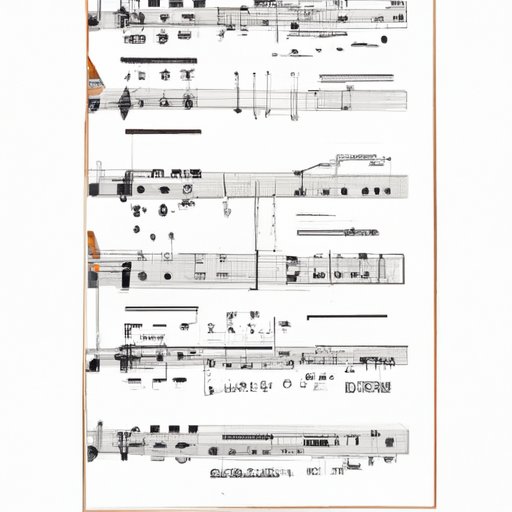
Introduction
Learning to read guitar sheet music is an essential skill for anyone serious about playing the guitar. While many guitarists prefer to learn by ear and by watching others, understanding music notation can help you advance your playing and unlock new musical opportunities. In this beginner’s guide, we’ll cover the basics of guitar sheet music, how to decode its symbols, common challenges, and dos and don’ts of music reading. We’ll also provide advice on different types of music scores and how developing music reading skills can enhance your musicianship.
Understanding the basics of guitar sheet music
To read guitar sheet music, you need to understand musical notation. In essence, musical notation is a standardized system of symbols used to represent musical sounds and rhythms on paper. Music scores are usually composed of several elements: the staff, the clef (either treble or bass), the key signature, and the time signature. The guitar fretboard is also represented on sheet music, often using tablature.
Decoding guitar sheet music symbols
One of the first things you’ll encounter on guitar sheet music is musical notes, which represent musical sounds. Each note has a symbol, a name, and a duration. Rests, a musical symbol indicating silence, and time signatures, which tell you how many beats are in each measure, are also essential to understand. On top of that, you’ll see many other musical symbols, such as chords, slides, bends, and hammer-ons. Examples of these symbols include quarter notes, half notes, whole notes, and eighth notes. Take your time to learn what each one means and how to play them on your guitar.
Overcoming common challenges in reading guitar sheet music
Learning to read music can be challenging, even for seasoned guitarists. A common beginner’s mistake is to try to read music too quickly instead of slowing down and taking the time to understand the notes and symbols. Exercise can help improve your reading skills while building your confidence. One essential exercise is sight reading, or playing pieces of music without prior familiarity. Practicing sight reading can also help you internalize music theory and become a better overall musician.
Dos and Don’ts of reading guitar sheet music
When you first start reading guitar sheet music, it’s essential to develop good reading habits from the outset. Don’t try to read too quickly, and make sure you stop and mark any difficult parts to revisit later. Avoid skipping repeats and try to identify patterns in the music. It’s also vital to stay relaxed and focused and not get frustrated with mistakes. Good reading habits include playing slowly, using a metronome, and practicing regularly.
Types of guitar sheet music
There are a few different types of guitar sheet music, including traditional music scores, tablatures, lead sheets, and chord charts. Each type represents musical sounds in a different way, and each has its advantages and disadvantages. Traditional music scores represent musical notes on a staff, whereas tablatures represent fingering positions directly on the guitar fingerboard. Lead sheets, often used for jazz or pop music, include melody, harmony, and lyrics, whereas chord charts only show chord progressions. Knowing the strengths and weaknesses of each type can help you choose the best one for the situation.
Reading guitar sheet music and developing musicianship
Reading guitar sheet music is not just a skill; it’s also an integral part of musicianship. By learning to read sheet music, you’ll become better equipped to play with other musicians, explore different playing styles and expand your musical horizons. Developing your reading skills can also help you become a better composer and improviser. As such, practicing music reading is an essential task for any serious guitarist.
Conclusion
In conclusion, learning to read guitar sheet music can be challenging but rewarding. By taking the time to understand the basics of music notation, decoding musical symbols, overcoming common challenges, and acquiring good reading habits, you can set yourself up for success. Don’t be afraid to practice regularly and pursue opportunities to expand your musical horizons. With these skills, you’ll be able to read and play music confidently and with ease.




